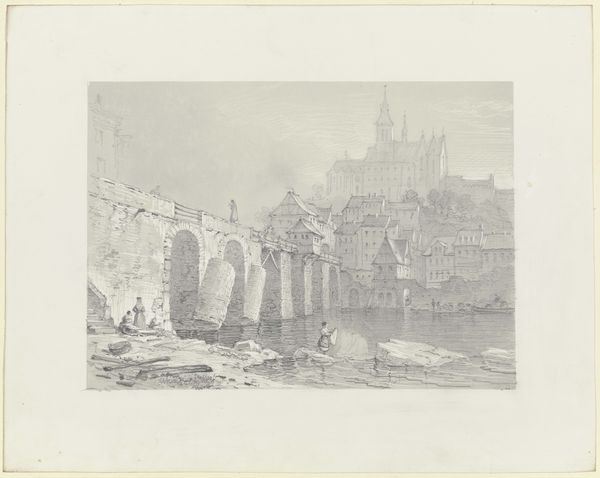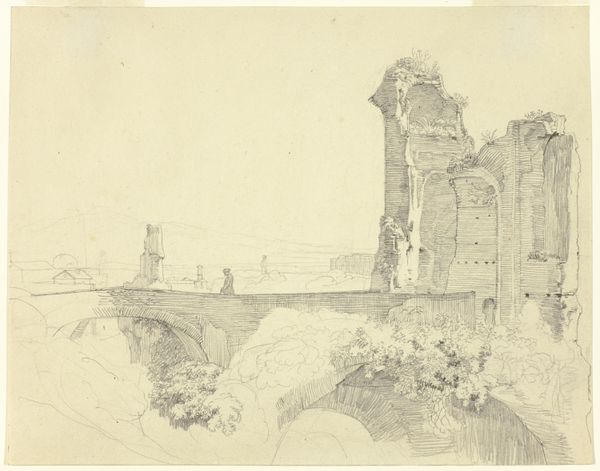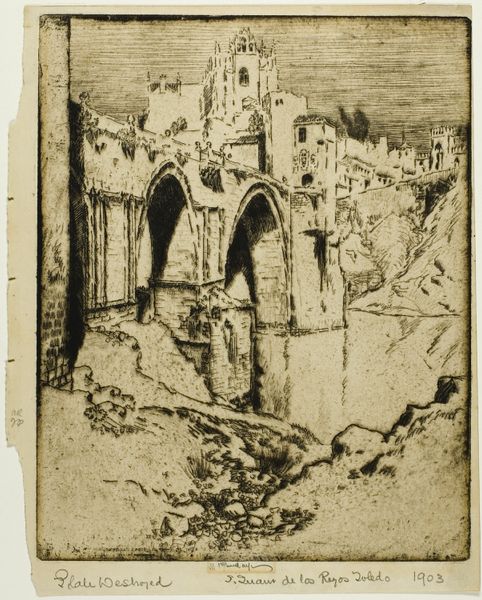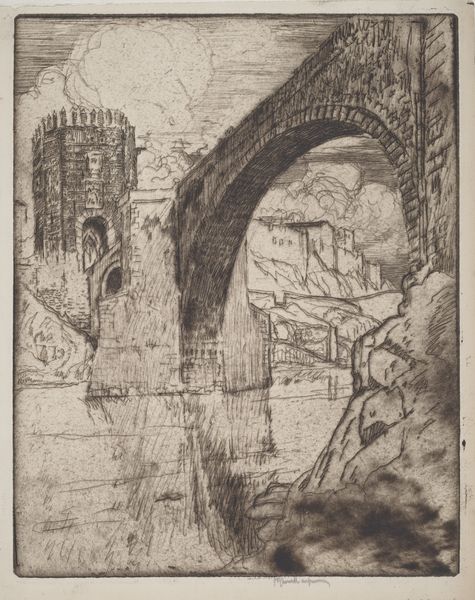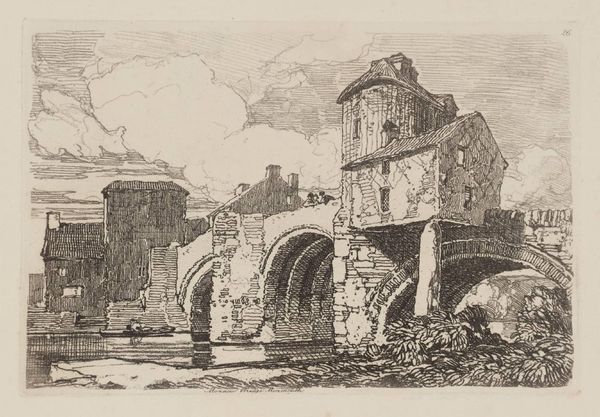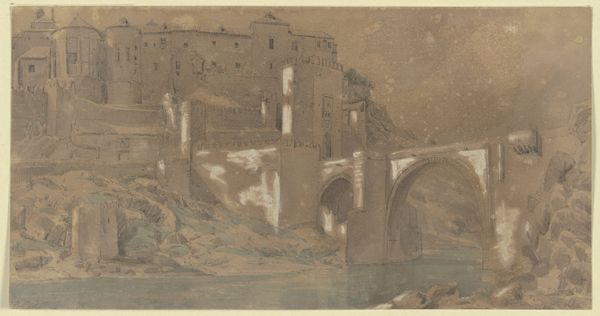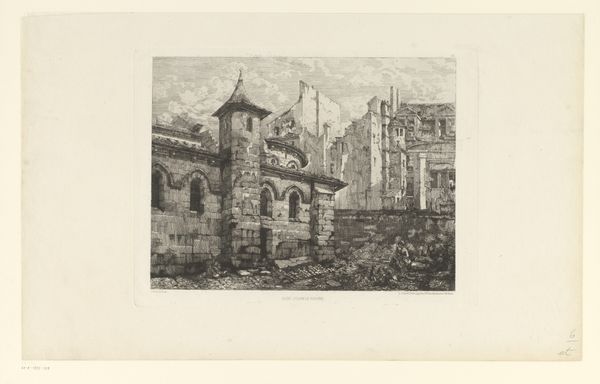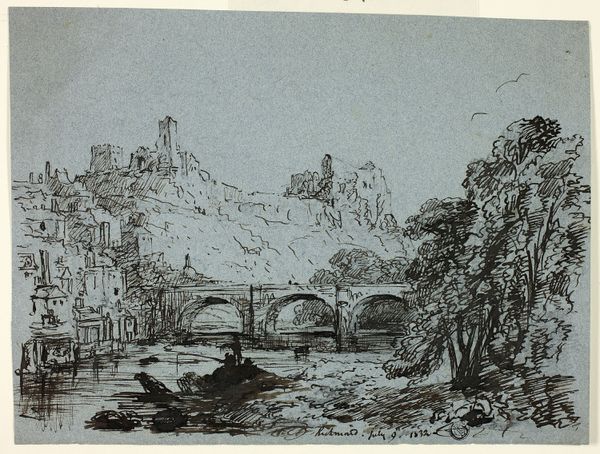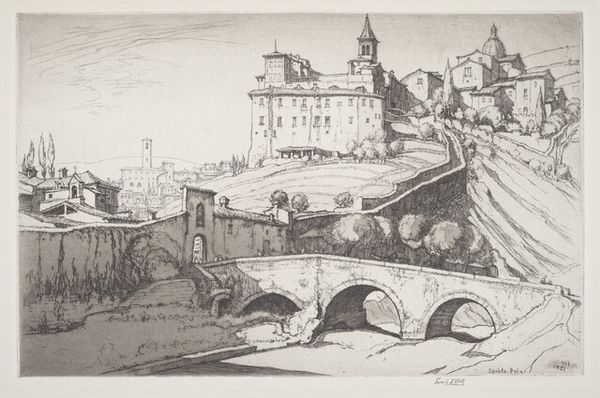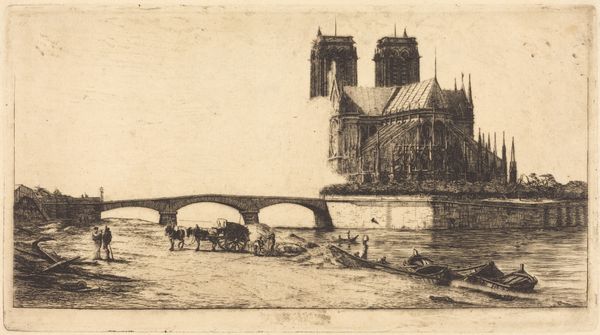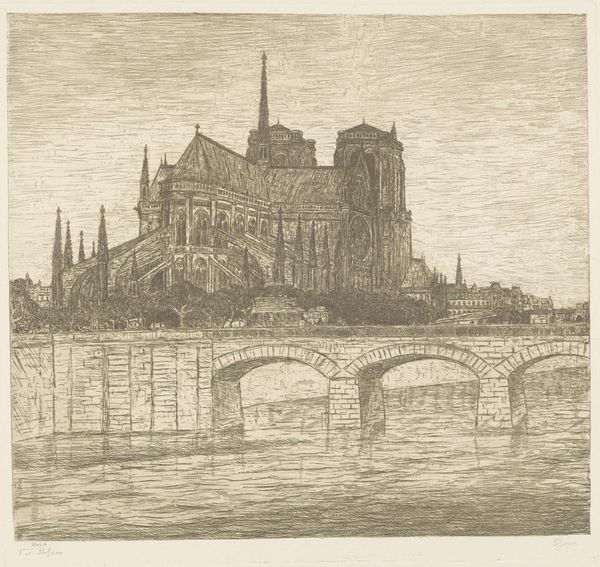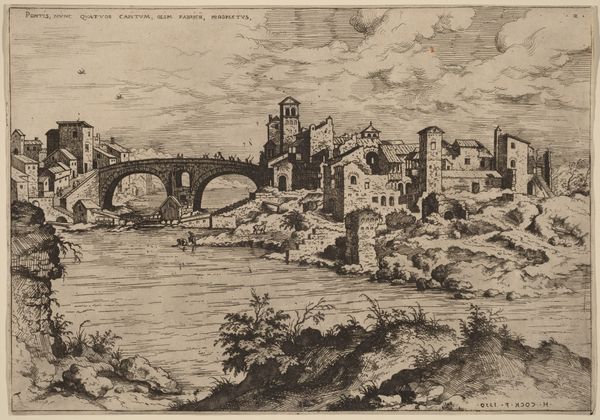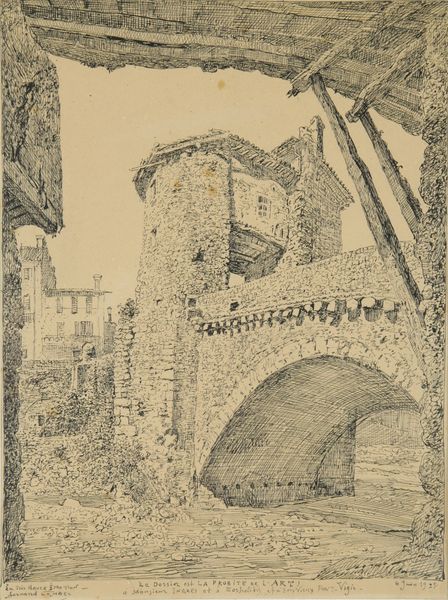
print, etching
#
art-deco
# print
#
etching
#
pencil sketch
#
landscape
#
cityscape
#
realism
Dimensions: plate: 25.4 x 34.13 cm (10 x 13 7/16 in.) sheet: 32.39 x 46.04 cm (12 3/4 x 18 1/8 in.)
Copyright: National Gallery of Art: CC0 1.0
Curator: This is John Taylor Arms’s etching, “Limoges,” created in 1932. Editor: It’s strikingly detailed. I’m immediately drawn to the textures – the rough-hewn stones of the bridge contrasting with the intricate details of the buildings above. There's an almost tangible weight to the scene. Curator: Absolutely. The image depicts the French city, dominated by its impressive Gothic cathedral. Arms was deeply interested in the dialogue between the medieval past and the rapidly modernizing world. The etching, through its commitment to realism, almost feels like a commentary on urban development. The rigid, dark stone infrastructure seems almost to resist the change inherent in the cityscape above. Editor: You know, it really gets me thinking about labor, the sheer amount of it required to build a structure like that bridge, the way we consume resources and materials. How long it took to cut the stones for the arches! The labor is imprinted in the print, which required tools and skill to be transferred to the plate before even seeing its final image. It becomes a testament to human effort over time. Curator: I agree. But look also at the placement of the cathedral relative to the rest of the buildings – both in terms of scale, its religious and political role in dictating urban growth – how faith-based communities use urban resources for specific community outcomes. It speaks to how dominant power structures often materialize into imposing landmarks, shaping how society operates. And it appears he carefully studied Gothic architecture, making it an important theme in his ouevre and approach to the built landscape in relationship to faith. Editor: You're right, there’s a deep respect for process reflected. Each line speaks to careful consideration and deliberate craft. I almost want to know where Arms sat when rendering the river and reflection under the bridge-- to better trace the physical experience of material transformation as well as the cultural meaning behind architecture. Curator: Thinking about "Limoges," I'm left pondering the complex relationships between art, society, and power structures embedded within the environment, then and now. Editor: For me, the value of the etching is what it shows us about the weight and means of human efforts—that what is left after all the people leave are these architectural material remains.
Comments
No comments
Be the first to comment and join the conversation on the ultimate creative platform.
